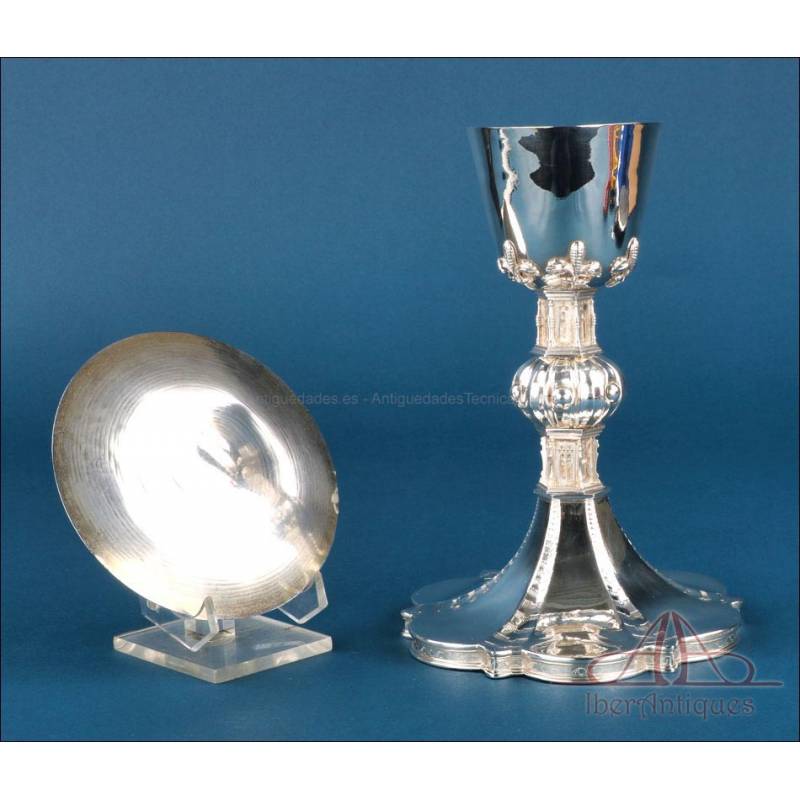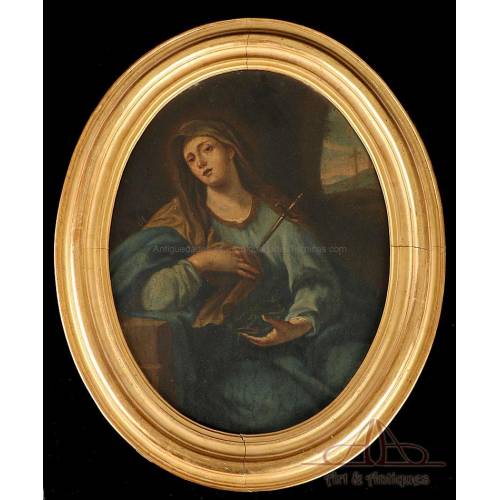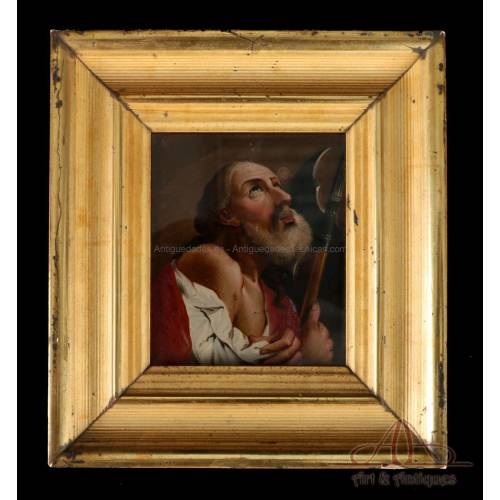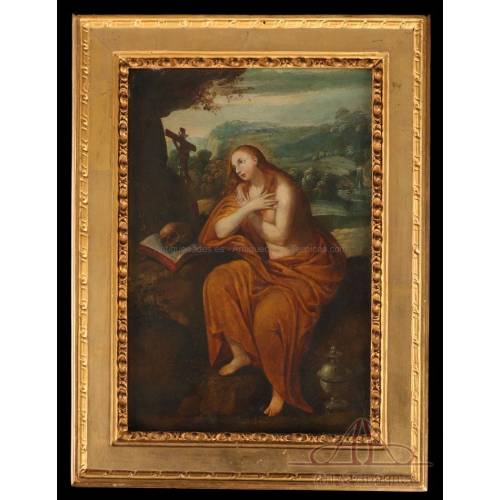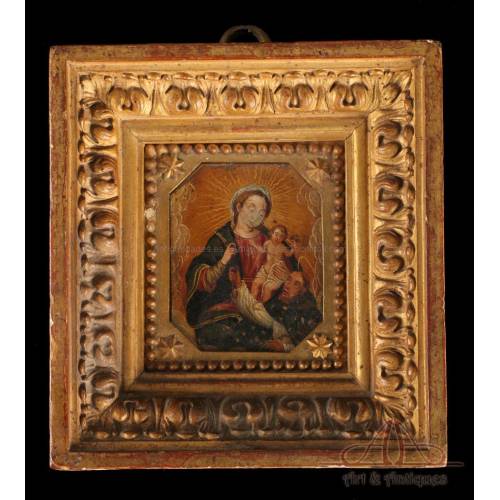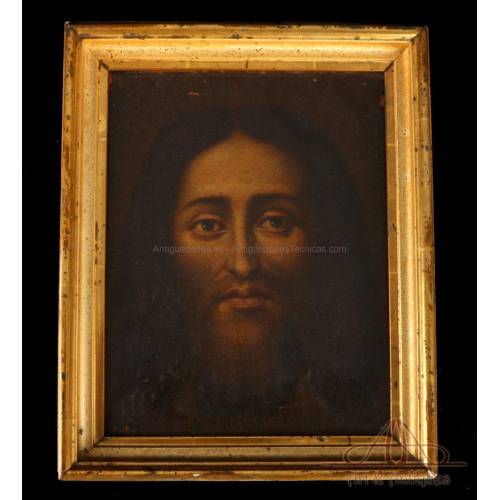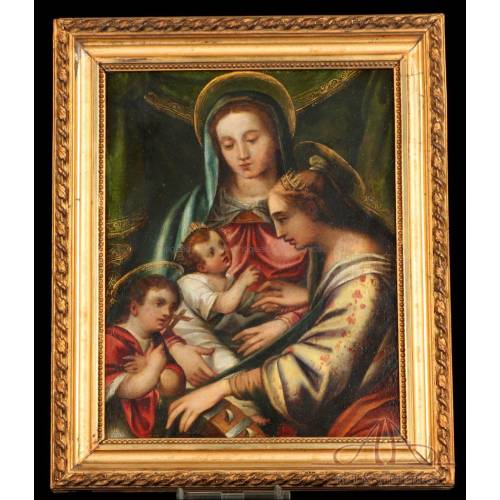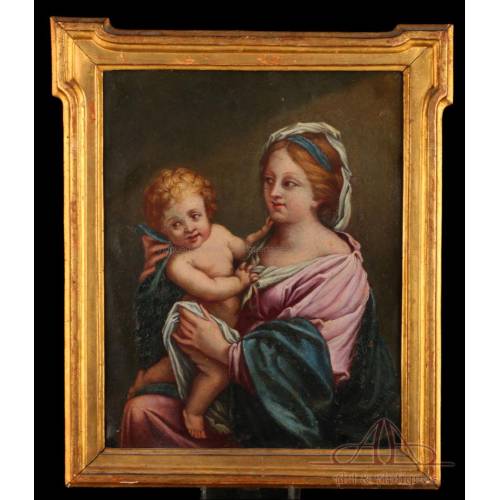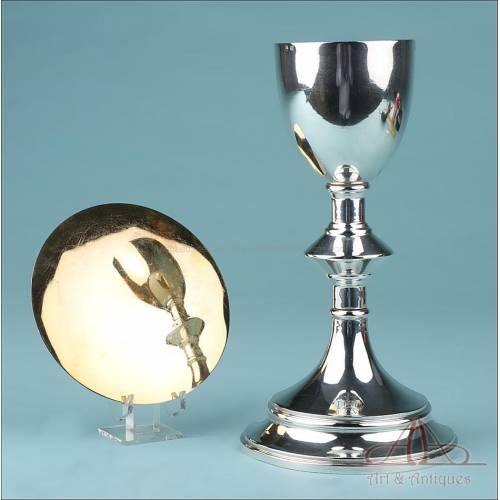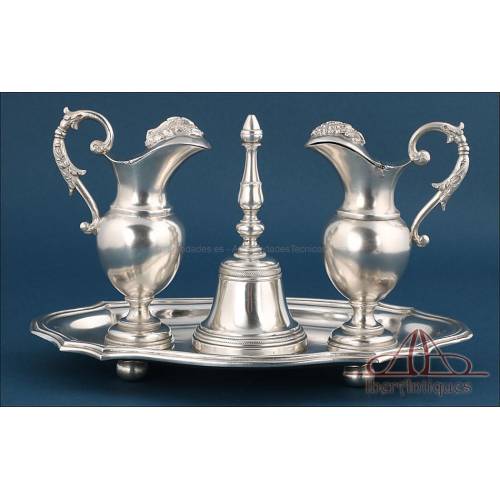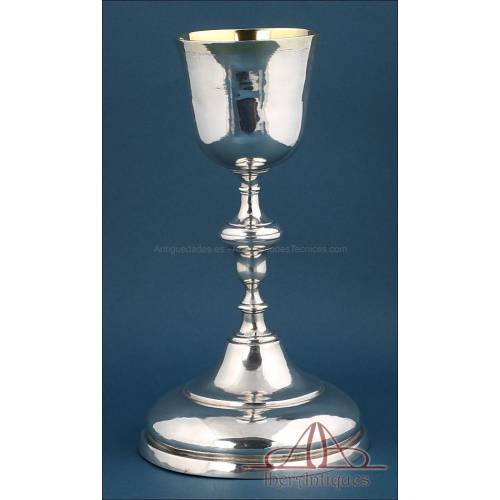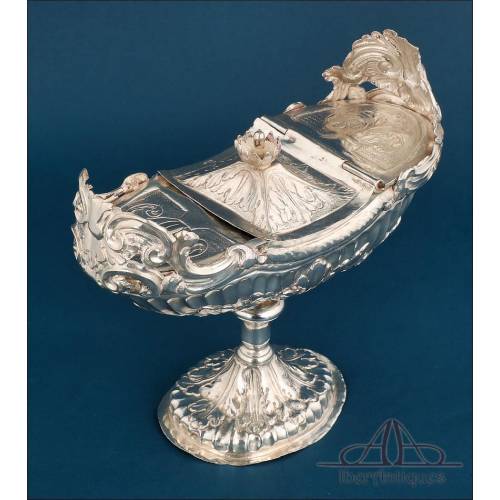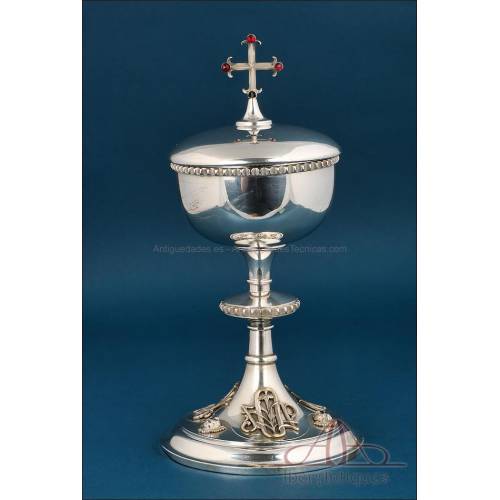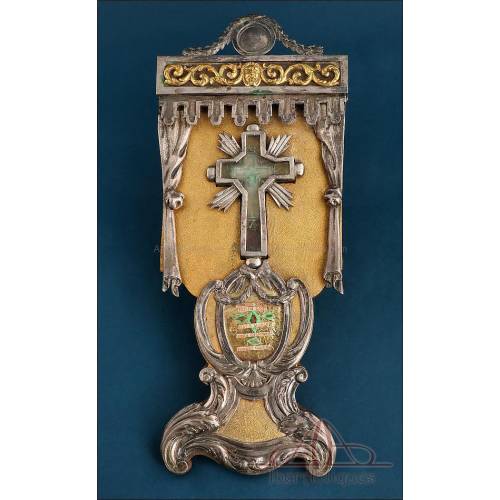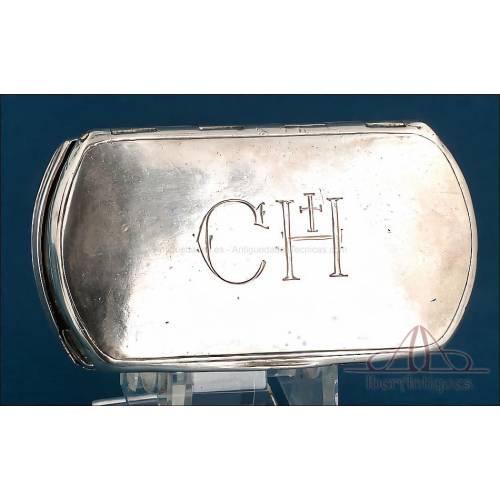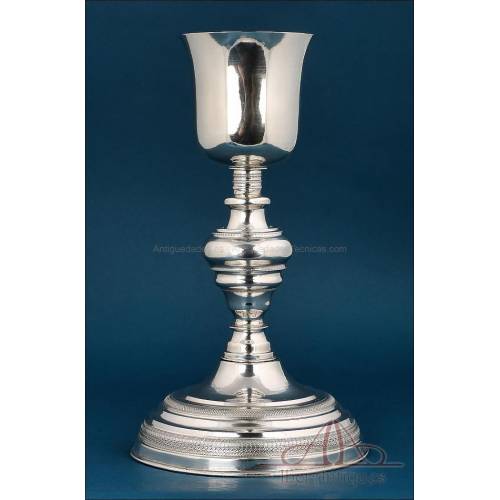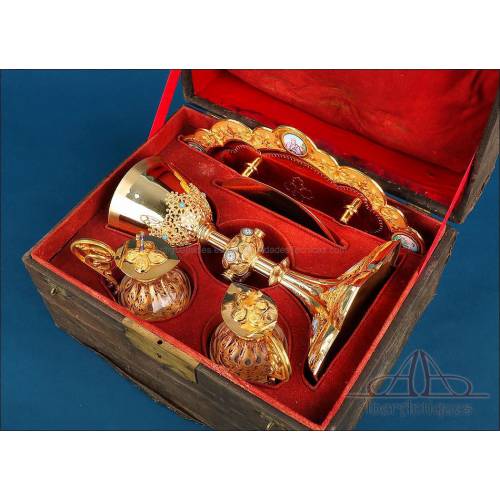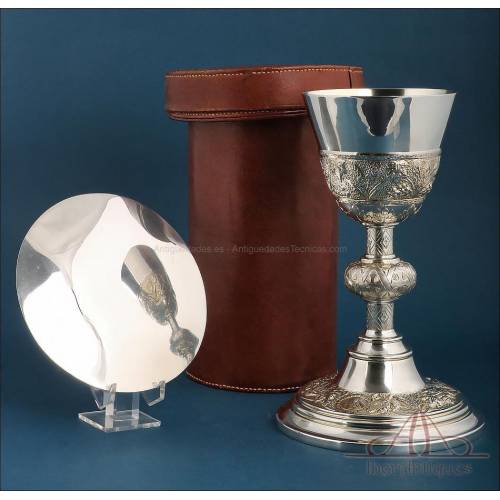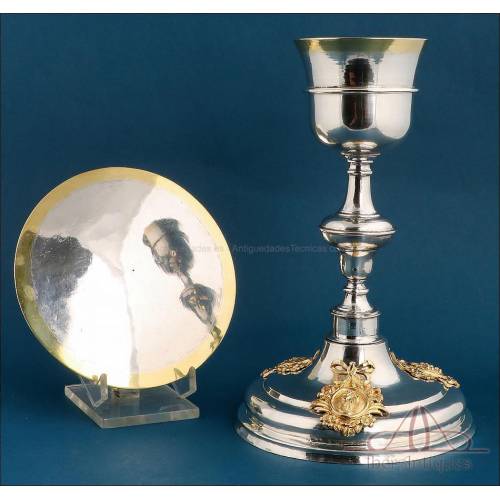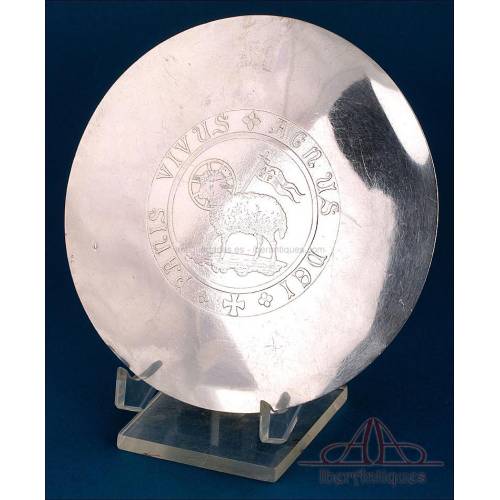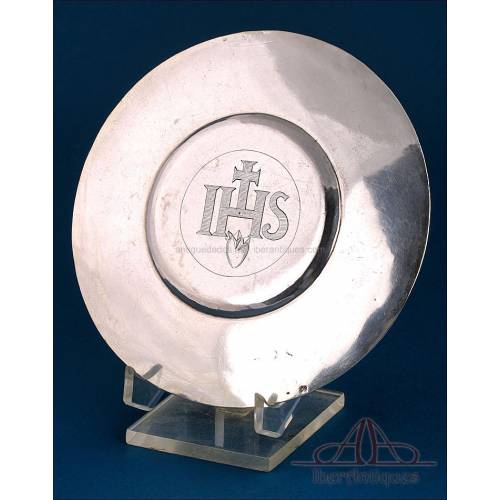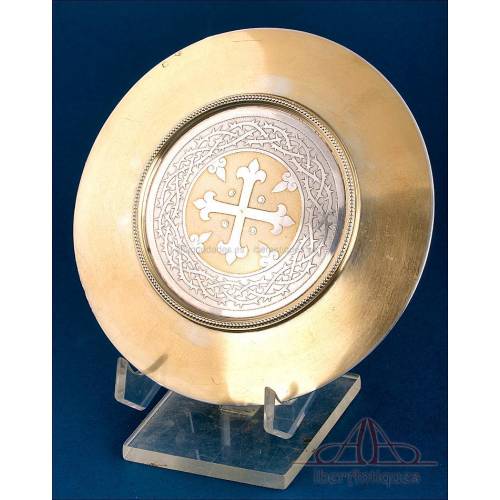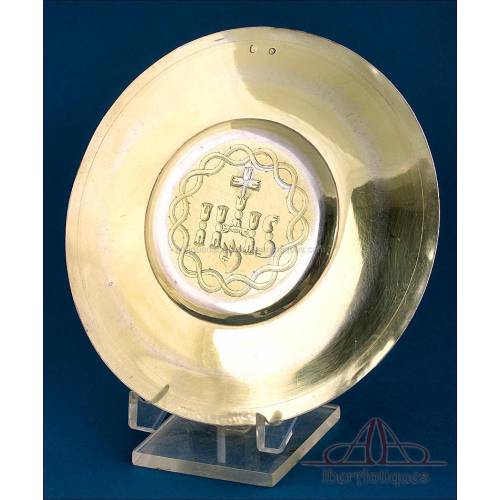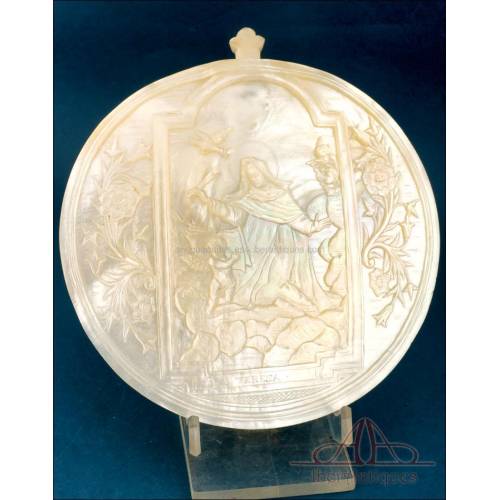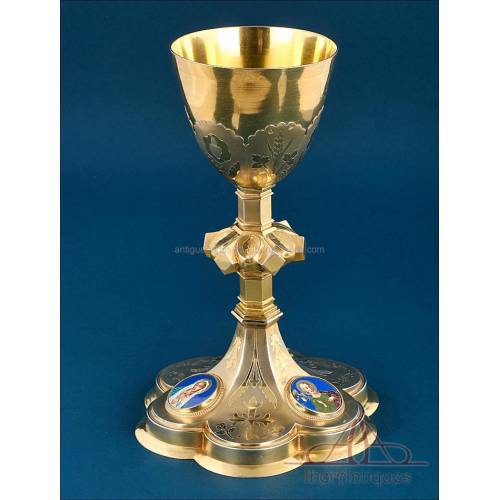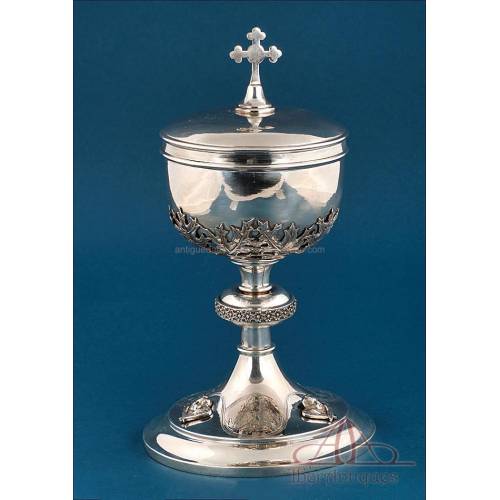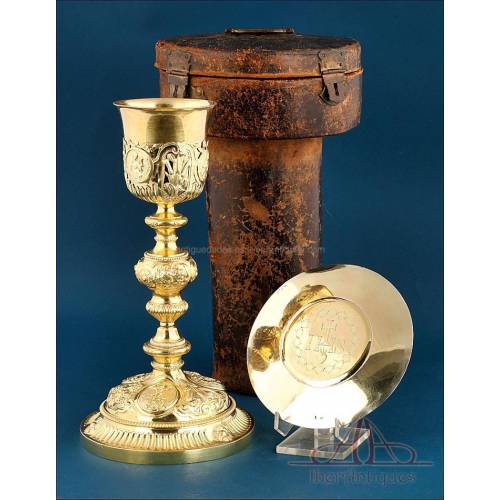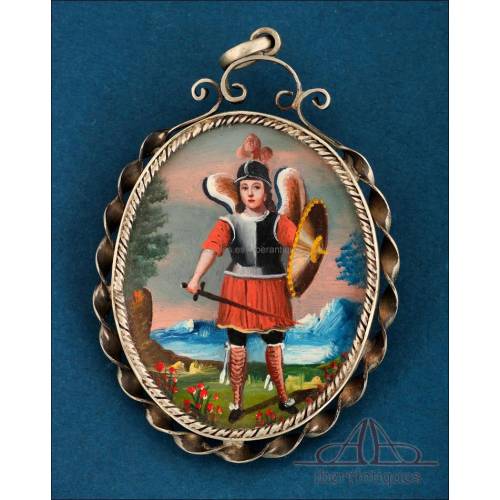E-279
Antique Silver Chalice and Paten. Granada Spain, circa 1900
Spanish chalice in white silver with matching paten, handcrafted. Traditional style. Ideal for church use. Spain, circa 1900.
Antique Silver Chalice and Paten. Granada, Spain, circa 1900
This splendid liturgical chalice with its matching paten, made entirely of white silver, is a tangible testimony of Andalusian silversmithing tradition from the late 19th and early 20th centuries. Though lacking visible hallmarks, it is guaranteed to be 100% silver. Both the chalice and the paten exhibit the shine and weight typical of an authentic and solid piece, worthy of any serious collection of sacred art or to be reintegrated into liturgical use.
The chalice features a generously proportioned trilobed base, decorated with hammered bands and finely chased reliefs. The structure is elevated by a double-knob stem, bulbous and adorned with small domes and columns, a shape especially popular in Spanish styles of the era. On the lower node, delicate burin work stands out, with religious motifs including crosses and pointed arches that evoke Gothic windows. A particularly striking detail is the presence of carved fruits beneath the cup, which, due to their rounded shape and crowned tops, may represent pomegranates, both a heraldic and religious symbol strongly linked to the city of Granada. This feature offers a compelling clue pointing to the piece’s origin in this historic Andalusian city.
The chalice measures 22.2 cm in height, with a cup diameter of 8.5 cm and a base diameter of 15.5 cm. The interior of the cup is gilded and retains its gold plating in excellent condition, as expected in pieces intended for Eucharistic use. This internal gilding is a sign of liturgical reverence, designed to protect the consecrated wine from direct contact with the metal.
The paten is simple yet functional and maintains the same austere and luminous aesthetic. It measures 13.2 cm in diameter and, like the chalice, is made of silver without visible hallmarks, but with equal assurance of authenticity.
Both pieces are in excellent structural condition, with no dents or damage. Only minimal surface signs of liturgical use are visible, far from detracting, these details add character and historical authenticity. This complete set, with its solid yet elegant lines, is ideal for a priest, someone about to be ordained, or a parish community seeking to recover a dignified piece for sacramental celebration.
A unique opportunity to acquire a devotional silverwork piece with over a century of history, perfectly suited for reintroduction into the Church, for use in a parish setting.
Measurements: Chalice: 22.2 x 15.5 x 8.5 cm (8.74 x 6.1 x 3.35 in). Weight: 673 g. Paten: 13.2 cm (5.2 in). Weight: 112 g. Total weight: 785 g.
History of Spanish Chalices
Liturgical chalices have been an essential part of sacred furnishings since the early centuries of Christianity. Throughout the ages, the Church has assigned great significance to these items, not only for their ritual function but also as expressions of sacred art at its finest. In Spain, the tradition of religious silversmithing reached remarkable splendor from the 17th to the 19th centuries, especially in regions like Castile, Andalusia, and notably, Granada.
Granada, a city with deep religious roots and a long-standing artistic heritage, stood out for its delicate silverwork. Since the 16th century, its workshops developed a distinctive style in the creation of religious pieces, blending Mudéjar influence with the language of Spanish Baroque. By the 19th century, many of these workshops continued producing chalices, ciboria, and monstrances using traditional techniques, often without visible hallmarks, especially for items intended for rural parishes or commissioned privately.
Bulbous forms, double-knob stems with raised ornamentation, and trilobed bases are common features in Andalusian silverwork. Between 1875 and 1925, many items were crafted without marks, whether for practical reasons or for everyday use in worship. These pieces were made by hand, using high-purity solid silver and techniques such as repoussé, hand-chasing, and mercury gilding on the interior of the cups.
Today, antique Spanish chalices are highly valued by collectors, liturgists, and antique dealers, not only for their beauty, but also as living artifacts of a region’s spiritual history. These objects do more than decorate display cases: they are living testimonies of faith, artisanal mastery, and the cultural continuity of Catholic liturgy.

